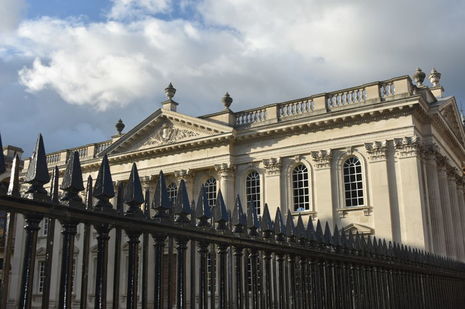State school admissions fall for second year in a row
In 2024, 71% of UK students admitted came from state-maintained schools, while 29% were educated privately

The proportion of students admitted to the University of Cambridge from state schools has fallen for the second year in a row, according to figures from the latest admissions cycle.
In 2024, 71% of UK (Home) students admitted came from state-maintained schools, while 29% were educated privately. This continues a downward trend from 2023, when state school admissions dipped to 72.6, the first decline in over a decade, representing a slight drop from 72.9% the previous year.
The fall in state school admissions coincides with the University’s decision, announced in 2024, to remove specific targets for state school intake from its future access and participation plans.
This trend is reflected at the University of Oxford as well, where state school admissions declined from 68.1% to 67.6% in 2023, marking the first drop since 2020.
Dr Martin Thompson, Director of Undergraduate Admissions at Cambridge, stated: “While this year’s figure is slightly lower, it follows a period of rapid growth in state school admissions, and remains well above the pre-2020 average. We remain fully committed to widening participation, and continue to expand our work with schools and communities across the UK, particularly in areas where progression to higher education is still low. Year-on-year variation is natural, but the long-term trend remains positive and a 71% state-sector intake still represents one of the highest levels on record.”
A spokesperson for the University added: “We saw several subjects become much more competitive. Students from economically disadvantaged backgrounds, and state school students, are more likely to apply to these courses. This must be understood in the context of a secondary school sector still grappling with disrupted education and attainment gaps.”
The Covid pandemic drove an increase in state school admissions as the University moved to teacher-assessed A-level grades. The return to more competitive grading in 2023 has tended to affect those schools where less support for students is available.
Courses with the highest proportion of state-educated students in 2024 included Psychological & Behavioural Sciences (85.1%), Education (84.0%), Mathematics (82.7%), and Land Economy (82.2%).
In contrast, the subjects with the highest private school intake were Classics (30.6%), Music (45.6%), and Theology, Religion and Philosophy of Religion (54.1%).
STEM subjects continued to admit a higher proportion of state school students (71%) compared to humanities (69.8%).
Among colleges, Trinity had the lowest proportion of state school offer-holders, at just 54.4%, followed by St John’s and Clare, both at 61.8%. Lucy Cavendish led the way with 94.3% of its intake from state schools, followed by Fitzwilliam (84.3%), and Jesus College (80.3%).
Despite the dip in state school admissions, other access indicators showed improvement. The proportion of students from ethnic minority backgrounds rose to 35.1% in 2024, up from 34% the previous year. Meanwhile, the percentage of admitted students who disclosed a disability increased from 13.2% in 2023 to 15.8%.
This comes a week after a Varsity investigation found that over 27% of Cambridge undergraduates reported having an immediate family member who attended Oxford or Cambridge.
 News / Cambridge students accused of ‘gleeful’ racist hate crime4 December 2025
News / Cambridge students accused of ‘gleeful’ racist hate crime4 December 2025 News / Churchill announces June Event in place of May Ball3 December 2025
News / Churchill announces June Event in place of May Ball3 December 2025 News / Cambridge cosies up to Reform UK30 November 2025
News / Cambridge cosies up to Reform UK30 November 2025 Comment / Don’t get lost in the Bermuda Triangle of job hunting 24 November 2025
Comment / Don’t get lost in the Bermuda Triangle of job hunting 24 November 2025 News / Uni redundancy consultation ‘falls short of legal duties’, unions say6 December 2025
News / Uni redundancy consultation ‘falls short of legal duties’, unions say6 December 2025









